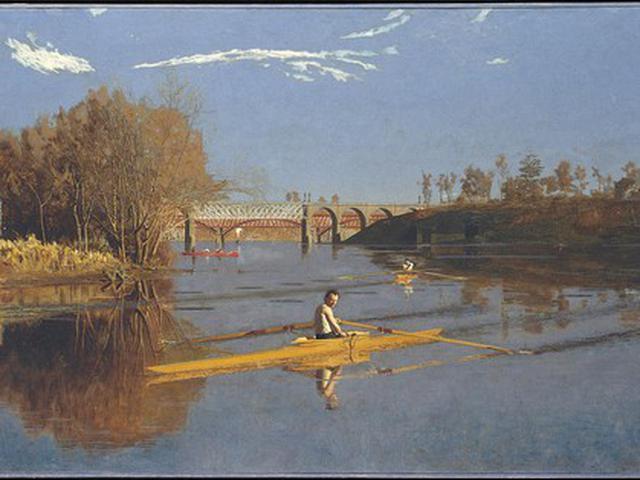Max Schmitt in a single scull

Thomas Eakins (1844-1916) introduced a new type of artistic realism to America. He studied art at the Pennsylvania Academy of the Fine Arts during his teenage years. He became frustrated by the school's reliance on plaster casts to teach the human form, so he took anatomy courses at a medical school to better understand the structure of the human body. At age twenty, Eakins spent four years traveling through Europe and studying at the École des Beaux-Arts in Paris. He admired the realism of Diego Velázquez and the dark color palettes of Rembrandt van Rijn. When he returned to the United States, his unfiltered style wowed his native Philadelphia.
In The Champion Single Sculls, Eakins shows a rower resting in his boat. The scene takes place on Philadelphia's Schuylkill River and features Eakins' childhood friend Max Schmitt. Sculling (rowing) was becoming popular for the American middle class, and Eakins and Schmitt were enthusiasts. Eakins also includes a self-portrait. The artist appears on the scull with his name in the middle. This subtle detail also acts as your signature.
The painting has a photographic clarity that is achieved with an emphasis on detail and light. The artist makes each wave individually. The expanse of water reflects the coast and the boats. With a clear command of perspective, Eakins depicts the geometric lines of the bridges and Schmitt's slightly shortened right arm. The bridges convey an accurate multi-point perspective.
Eakins uses atmospheric perspective for the background. He painted en plein air, observing the scene in person, rather than recreating it from sketches while working in his studio. He aimed to be faithful to what he saw.
© Tourblink